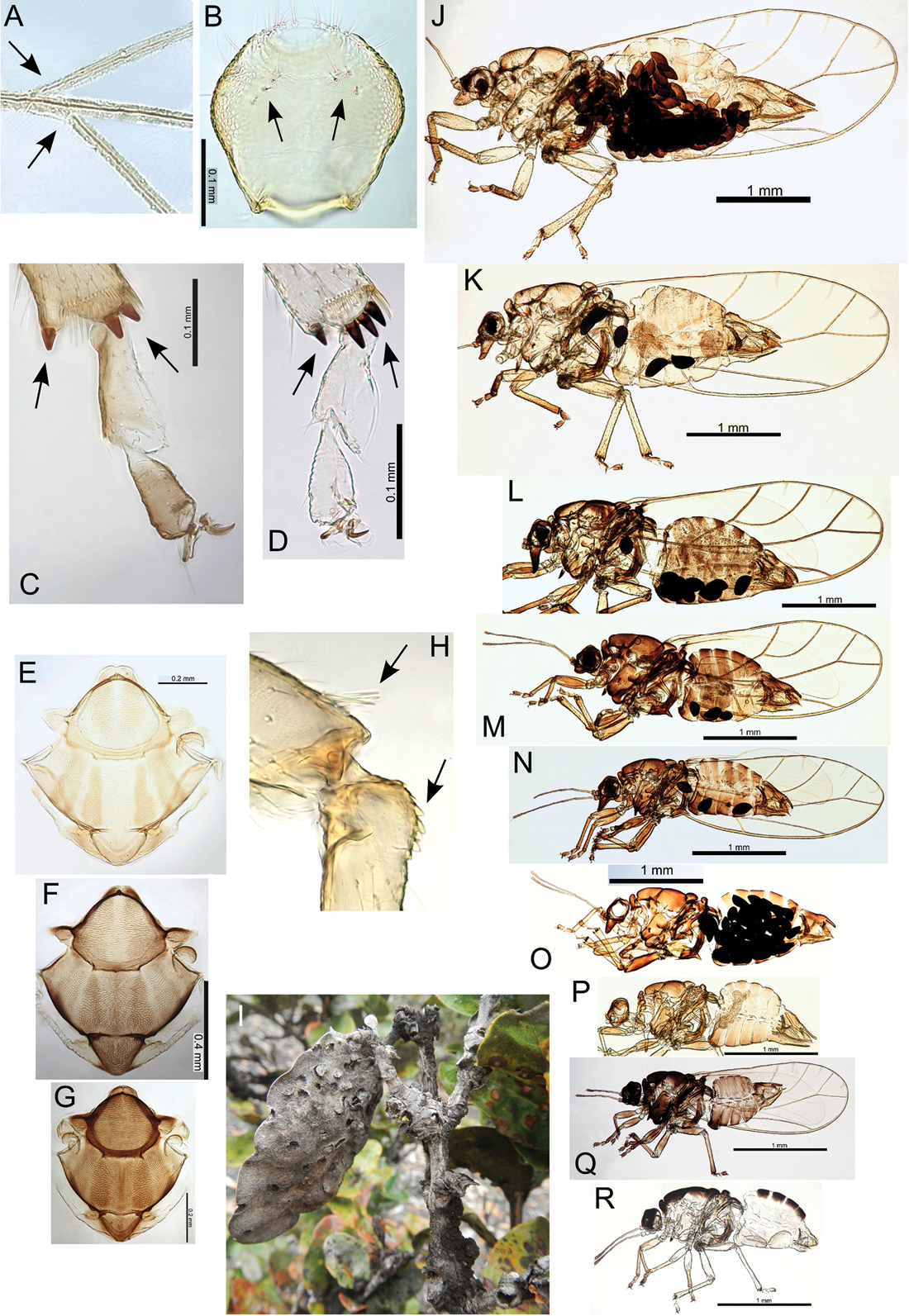
|
||
|
Examples of variability in Pariaconus adults, and an example of severe host damage. A fore wing detail showing a common trait variation with R branching slightly anterior of M and Cu1 bifurcation (P. pele) B posterior surface of male proctiger showing setae on interior of each lobe (P. pyramidalis) C typical 1+2 arrangement of sclerotized apical metatibia spurs, the single spur typically more stalked in ohialoha group (P. molokaiensis) D common variation of 1+3 arrangement of sclerotized apical metatibia spurs, the single spur typically less stalked in bicoloratus group (P. namaka) E–G thorax (dorsal view): EP. hawaiiensisFP. ohiacolaGP. dorsostriatusH metafemur with several stout setae apically, and basal metatibia with cluster of genual spines (P. molokaiensis) I example of severe damage to a host plant with local necrosis caused by two closed gallers: P. pele (galls on leaf) and P. hawaiiensis (galls on stem and petiole) (Kona Hema, Hawaii) J–R adult size variation (females): J–Oohialoha group (abdomens with dark coloured eggs), Pkamua group, Qminutus group, Rbicoloratus group, JP. oahuensis (enclosed galls on stem/bud/leaf cones) KP. hawaiiensis (enclosed galls on stem/bud) LP. mauiensis (unknown gall biology) MP. montgomeri (enclosed flat gall on leaf) NP. ohiacola (enclosed flat gall on leaf) OP. pele (enclosed flat gall on leaf) PP. caulicalix (open cup gall on stem) QP. gibbosus (unconfirmed, likely open pit gall on leaf) RP. hina (abdomen with pale eggs) (unconfirmed, likely free-living). |